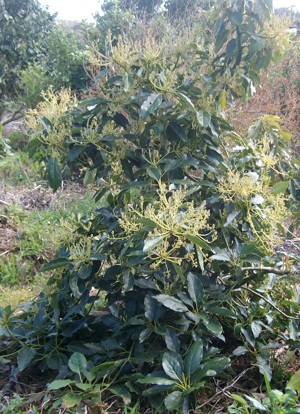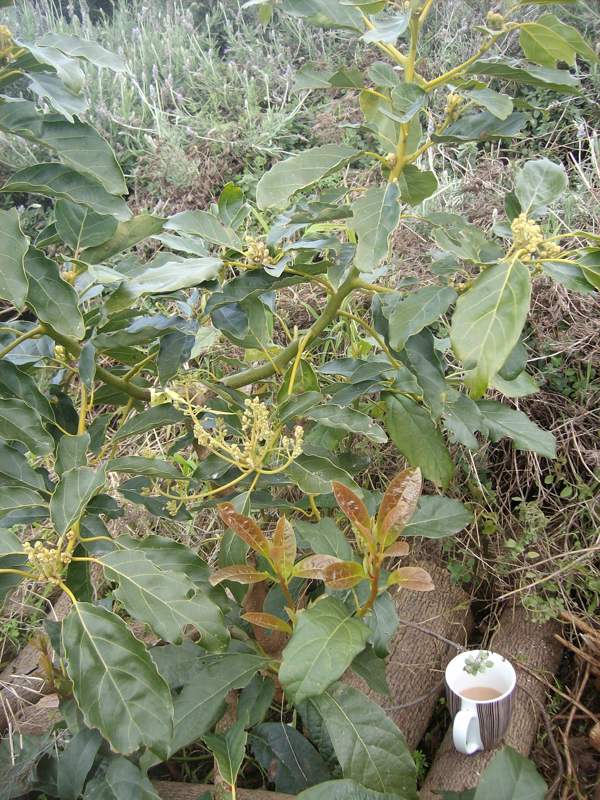Summary: If you want to grow a small avocado tree, Pinkerton avocado is a good choice for the backyard. Provided you have a pollinating variety. The Pinkerton avocado variety is, in warmer climates, a winter to early spring maturing fruit. In New Zealand's colder winter conditions, the bulk of the crop is more likely to be mature in spring. Largest size, but still slightly immature 'early-set' fruit can also be picked from mid july and will have far better eating quality than any july size-picked Hass.
The Pinkerton fruit is a green skin type. The skin is thin, pliable, and easy to peel. The flesh is smooth, oily, and is excellent eating quality.
The Pinkerton tree is small, almost dwarf, and easily trained to a single stem.
Pinkerton has a very long flowering and fruit set period, but in New Zealand I suspect the winter flowers will set few, if any, fruit. The best set is likely from flowers in september and october. Pinkerton has A type flowers, and a B type variety appears to be needed for fruit set. Overall, this is the ideal size avocado for small garden - if the pollenization issue can be sorted out.
 The tree
The tree